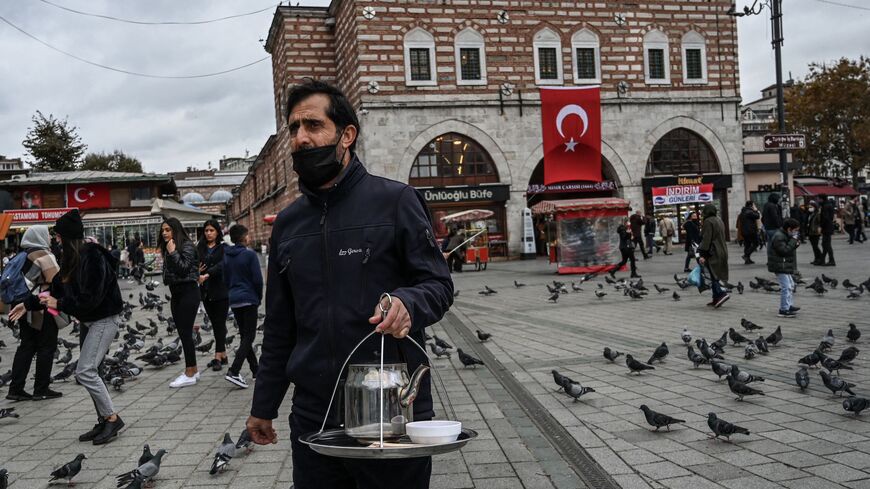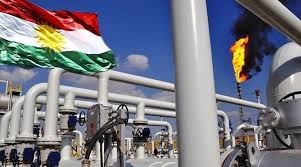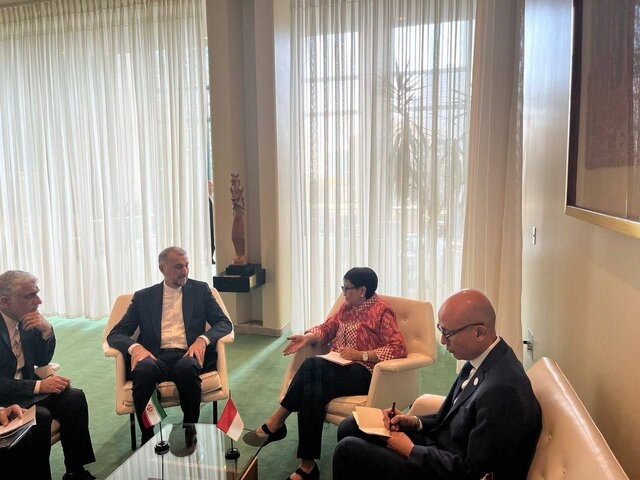Turkey’s gross domestic product grew an annual 7.4% in the third quarter boosted by exports and demand, official data released Tuesday show. The overall growth rate this year is now likely to reach a flashy 10%, yet the prospects for next year appear dim as Turkey keeps accumulating risks amid the slump of the Turkish lira and unruly inflation.
The third-quarter growth rate owes partly to the base effect of the relatively low growth of 1.8% in the same period last year, but also to a recovery in exports and tourism driven mainly by the depreciation of the lira and a return to a relative normal since the launch of COVID-19 vaccinations, including a revival in the services sector.
Inflation-driven spending has helped boost industrial activity as well. Turkey’s Central Bank has heeded President Recep Tayyip Erdogan’s pressure to lower its policy rate to stimulate growth rather than raising the rate to rein in inflation, which is just shy of 20%. To protect their money against inflation, consumers have rushed to buy durable and other goods before prices rise further and producers have turned to stocking up on raw materials, contributing to the industrial revival.
Turkey’s GDP grew 7.4% in the first quarter and 22% in the second, according to revised figures released Tuesday. The economic expansion is expected to continue in the last quarter, albeit at a slower pace, and result in an overall growth rate of about 10% for the year. The International Monetary Fund revised its growth forecast for Turkey upward to 9% in October.
Brushing aside the lira’s nosedive and the rising inflation risk, Erdogan is bent on stimulating growth, hoping to bolster his sagging popular support ahead of elections in 2023. His economic policies, including the unconventional view that high interest rates are the cause of high inflation, have fueled Turkey’s risk premium, and a significant risk accumulation is clouding the country’s economic prospects for next year.
The Turkish economy had grown only 0.9% in 2019 and 1.8% in pandemic-ravaged 2020. This year's miraculous growth has come against the backdrop of the worst currency depreciation under Erdogan’s nearly two-decade rule that has been stoking inflation.
In all developed and developing countries facing the problem of inflation, central banks have been hiking their policy rates to cool their respective economies. In sharp contrast, Turkey’s Central Bank has cut its policy rate by 400 basis points to 15% since September at Erdogan’s behest despite a nearly 20% inflation, which is well above the mean of emerging markets. With real yields deeply negative, savers have increasingly put their money in hard currencies or in homes, cars and other durable goods, while entrepreneurs have sought to stock up on intermediate goods and raw materials.
As of Nov. 22, hard currency deposits in the country totaled $257 billion and accounted for 60% of all deposits. In terms of deposits held by real persons, the figures stood respectively at $161 billion and 61%. The dollarization increased by 3 percentage points in the week to Nov. 22 alone as the lira suffered an unprecedented crash. The currency tumbled for 13 days in a row, touching a historic low of 13.5 versus the dollar on Nov. 23. It recovered some ground in the ensuing days as the government sought to hype the prospect of Emirati investments after Erdogan’s fence-mending talks with the Abu Dhabi crown prince. A fresh plunge by the lira would hardly come as a surprise as the hype dissipates.
Nevertheless, the weakening lira has been a motivating factor for exporters. Having resigned to the fall of the currency, the government argues that exports will continue to rise fast and eventually bridge the country’s current account deficit, which in turn will lead to an abundance of hard currency and an easing inflation.
Exports and the tourism sector appear to have been the main driver of the third-quarter growth. While making use of the falling lira, exporters have also cut prices at times to boost their sales to foreign markets.
The government may present this as a new model of capital accumulation, but that path is clearly not sustainable. Manufacturers in almost all sectors in Turkey rely on imported energy and imported inputs, including equipment and machinery. To sustain export-oriented production, they have to continue to import but are facing growing costs due to the depreciation of the lira.
Thus, the export boom in Turkey’s economic expansion could prove a flash in the pan. The growth rate is likely to decelerate to 3-4% in the last quarter and drop even further in 2022 under the added impact of this year’s high base effect. And with risks accumulating fast, the 5% growth target set in the government’s medium-term economic program for next year appears hardly achievable.
At home, consumer inflation is likely to shoot up to the region of 25-30% in a short time, curbing further purchasing power and consumer demand in a country where the jobless number about 8 million, according to the broad definition of unemployment, and nearly half of wage-earners are paid the minimum wage.
Globally, expectations have moved up for the US Federal Reserve’s first rate hike next year, curtailing the flow of foreign funds to emerging markets like Turkey. While peer countries have raised interest rates to stem the flight of foreign money, Turkey has already signaled another rate cut in December at the expense of further deterring foreign investors.
In another omen of continued currency woes, Turkey’s risk premium hovered between 470 and 500 basis points in the last week of November, more than double the risk premiums of the closest peer countries.
Moreover, the Central Bank’s net foreign reserves are $35 billion in the red, keeping the bank from using reserves to prop up the lira. And with Erdogan stiffly opposed to rate hikes as a macroeconomic policy, the lira is left defenseless in the face of short-term external debt liabilities of $167 billion and the locals’ rush for hard currency.
All those risks are hard to cope with, threatening to outpace the growth trend and snowball down the road unless Turkey goes to early elections to overcome the mistrust in Ankara’s economic management.
Al-Monitor
Reporter's code: 50101







Your Comment